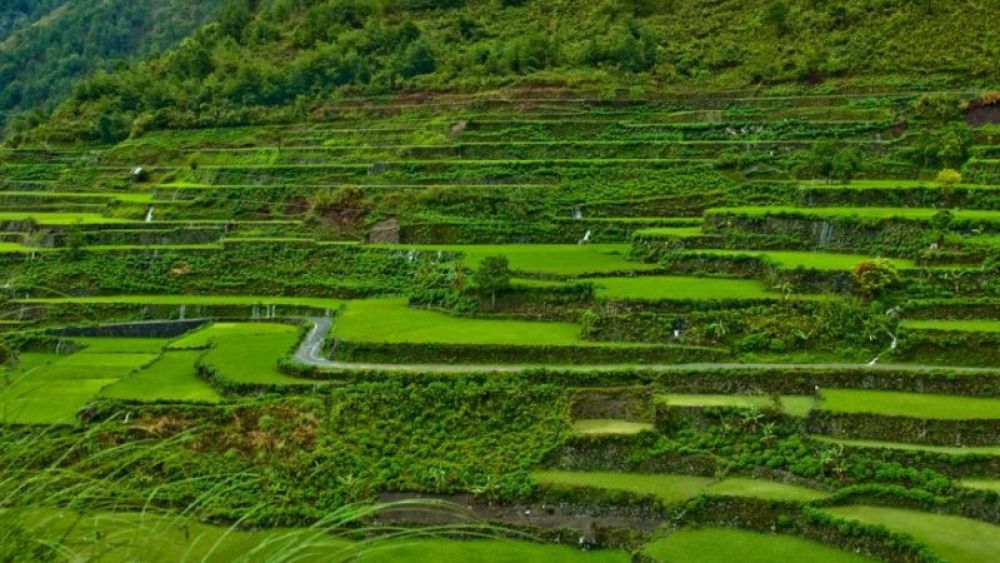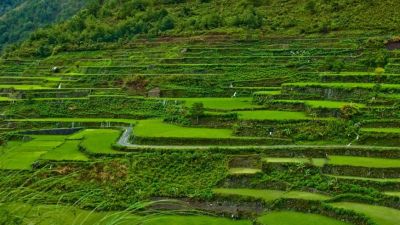

Dzukou Valley, often referred to as the 'Valley of Flowers of the East', offers an awe-inspiring trekking experience located at the border of Manipur and Nagaland, near Kohima. The valley is renowned for its natural beauty, seasonal flowers, and a diverse range of flora and fauna. The trek to Dzukou Valley starts from Viswema or Zakhama village. It is an experience of a lifetime as the trail leads adventurers through rugged terrains, vibrant flowers, and rolling hills. The trek is moderately challenging and takes trekkers through a variety of landscapes, including bamboo forests and rhododendron groves. At the top, the panoramic views of the valley and the enchanting serenity make the effort worthwhile. It's a popular destination for camping and nature photography. The best time to visit is from June to September when the valley is ablaze with wildflowers.
The World War II Tour in Kohima is a reflective journey into the past, paying homage to the history of the fierce battle fought between the British Indian Army and the Japanese forces during the Second World War. The tour usually includes a visit to the Kohima War Cemetery, a solemn and well-maintained site where one can see the graves of the brave soldiers who lost their lives during the battle. Guides provide insightful commentary on the strategic importance of the Battle of Kohima and how it affected the global war efforts. The tour may also cover the Kohima War Museum which houses relics, photographs, and stories from the war. Walking through these historical sites not only educates visitors on the significant battles fought here but also offers a poignant reminder of the costs of war.
Kohima Village, traditionally called 'Bara Basti', is one of the oldest and largest villages of the Naga tribes. A trip to Kohima Village can be a culturally enriching experience as visitors get to observe the fascinating traditional Naga lifestyle. The village entrance, marked by a large traditional wooden gate adorned with carvings of guns and warriors, offers a glimpse into the village's rich warrior culture. Visitors can admire the age-old Naga architecture, see the ceremonial wooden drums, visit the local church, and interact with friendly villagers. The Morungs, which are traditional youth dormitories, exhibit the social system of the Naga tribes. With guided tours, one can learn about the hierarchy, customs, and folklore associated with the village and its inhabitants. The visit to Kohima Village is a deep dive into the remarkable history and culture of the Nagas.
A visit to the Naga Bazaar in Kohima is a unique and eye-opening experience that provides a deep cultural insight into the lives of the local people. The market bustles with activity and showcases an array of local products, from fresh produce and meats to traditional handicrafts and textiles. One can find a variety of indigenous food items, including fermented bamboo shoots, smoked meats, and even exotic items such as hornet larvae or silkworms for the adventurous foodies. The bazaar is also a great place to purchase authentic Naga shawls, beaded jewelry, and hand-woven baskets. It's a place where visitors can mingle with the locals, try local delicacies, and observe the vibrant daily life of the Nagas. The market is full of colors, sounds, and smells, which makes it a must-visit spot for anyone looking to experience the authentic spirit of Nagaland.
Khonoma Green Village is situated about 20 kilometers from Kohima and is renowned for its environmental conservation initiatives and sustainable practices. The village is known as the first 'Green Village' in India, due to its community-driven conservation models and ban on hunting and logging activities. Visitors can take guided tours to learn about the village's history, visit sustainable agricultural lands, explore the terraced fields, and witness the community's efforts in conserving their rich flora and fauna. The village also offers a beautiful view of the surrounding mountains and terrains. Guests often participate in bird-watching activities, take nature walks, and learn about the Angami tribe's practices that have successfully balanced traditional lifestyles with modern conservation methods. It is an excellent model for community-based tourism and a source of inspiration for eco-conscious travelers.
The Hornbill Festival, famously dubbed as the 'Festival of Festivals', is an annual cultural extravaganza celebrated in the first week of December in Kohima. The festival takes place at the Naga Heritage Village, Kisama, around 12 km from Kohima town. This vibrant festival showcases Nagaland's rich cultural heritage, traditional arts, dances, folk songs, and sumptuous cuisines. Visitors from all over the globe converge to witness spectacular performances and rituals enacted by various Naga tribes. Each tribe presents their unique traditions through colorful attire, music, and dance. The festival also includes indigenous games, a crafts bazaar, art exhibitions, and food fairs. Attending the Hornbill Festival provides an extraordinary and all-encompassing experience of Naga culture and is a fantastic opportunity to witness the unity and diversity of Naga tribal life.
Shopping for local handicrafts in Kohima is a delightful experience for those interested in artisanal handmade products. The State Emporium and local markets are brimming with a wide range of traditional Naga crafts. Among the popular items are beautifully woven Naga shawls with tribal motifs, cane and bamboo handicrafts, beaded necklaces, bracelets, and traditional Naga spears and dao (machetes). Each piece reflects the intricate artistry and cultural significance of the Naga tribes. Shopping here is not just an opportunity to buy souvenirs but also to support the local economy and preserve the traditional craftsmanship. Other notable items include wooden carvings, tribal masks, and pottery. Visitors can often meet the artisans themselves, learn about their craft, and even watch them create their artworks.
Sampling the local cuisine of Kohima is a must-do for gastronomy enthusiasts looking to expand their culinary horizons. Nagaland's food is known for its simplicity, flavor, and use of locally sourced ingredients. Traditional Naga dishes often include smoked, dried, or fermented meats, with bamboo shoot, raja mircha (one of the hottest chilies in the world), and local herbs adding distinctive flavors. Common dishes to try include smoked pork with axone (fermented soybeans), bamboo-steamed fish, and the famous Naga thali, which offers a bit of everything. Vegetarians can enjoy dishes like boiled vegetables with bamboo shoots and naga dal (lentils). There are several local eateries and markets in Kohima where one can try these dishes. This culinary journey will give visitors an authentic taste of Naga culture and lifestyle.
Mary Help of Christians Cathedral is a significant spiritual landmark in Kohima, which attracts visitors irrespective of their religious beliefs. The cathedral stands atop a hill offering panoramic views of the city and the surrounding hills. It embodies Naga architecture elements and holds an important place in the Christian community of Nagaland. The cathedral's serene environment offers a peaceful retreat for prayer, meditation, or simply a place to sit and reflect amidst the hustle and bustle of the city. Visitors can admire the beautiful stained glass windows, the architecture, and the ambiance. The cathedral is also a testament to the resilience of the Naga people and the role of Christianity in shaping the modern history of Nagaland. Tours can be self-guided or with a knowledgeable guide who can provide insights into the cathedral's history and significance.
Japfu Peak stands as the second-highest peak in Nagaland, offering avid hikers and nature lovers an exhilarating challenge and the chance to experience some breathtaking views. The hike to Japfu Peak can be quite demanding, with steep climbs and rugged terrain, but the reward at the summit is a stunning panoramic view of the surrounding valleys and mountains, including Dzukou Valley. Along the way, hikers can encounter unique species of rhododendrons, birds, and perhaps even glimpses of rare wildlife. The peak is particularly popular among the tourists for the opportunity to witness the world's tallest rhododendron tree. The best time for this hike is from November to March when the weather is clear and conducive for trekking. Those who successfully reach the top are rewarded with the sense of accomplishment that comes from conquering one of the most challenging trails in Nagaland.
